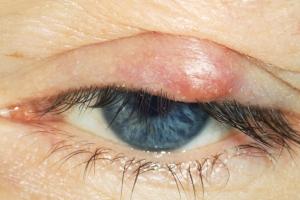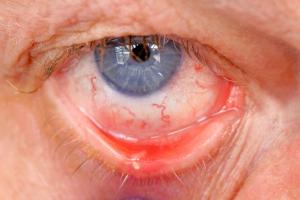Stye
A stye is a small, painful lump (cyst) on the inside or outside of the eyelid. Styes are usually caused by a bacterial infection. They usually affect one eye. It’s possible to get them in both eyes, or to have more than one stye in the same eye.
Symptoms of a stye
Styes are usually caused by a bacterial infection.
Your vision shouldn't be affected.
Doctors sometimes refer to them as infected eyelid cysts.
The main symptoms of a stye include:
- a painful yellow lump on or in the eyelid
- redness of the eye or eyelid
- a watery eye (in some cases)
Styes often get better without treatment, particularly after they burst and release pus.
Don't try to burst the stye yourself.
See your GP if you have a stye that's very painful with a very swollen eyelid.
Types of stye
There are two general types of stye:
- an external stye – a swelling that develops along the edge of your eyelid - it may turn into a yellow pus-filled spot that's painful to touch
- an internal stye – a swelling that develops on the inside of your eyelid - it's usually less painful than an external stye
External styes

A stye on the outside of your eyelid may be caused by an infection of:
- an eyelash follicle – these are small holes in your skin that individual eyelashes grow out of
- the sebaceous (Zeis) gland – this gland is attached to the eyelash follicle and produces an oily substance called sebum, which lubricates the eyelash to prevent it drying out
- the apocrine (Moll) gland – this sweat gland empties into the eyelash follicle and helps prevent the eye drying out
Internal styes

Internal styes can occur when the meibomian glands become infected.
These glands are found on the eyelids.
They produce an oily liquid that makes up part of the tear film that covers your eye.
If the glands become blocked, a cyst can develop, which can become infected.
Blepharitis
Eyelash follicle infections can sometimes be a complication of blepharitis.
Symptoms of blepharitis include:
- inflamed (red and swollen) eyelids
- burning or sore eyes
- crusty eyelashes
- itchy eyelids
Blepharitis can be a complication of rosacea (a skin condition that mainly affects the face).
Treating a stye
Most styes get better without treatment within one week. In the meantime, the treatments below should help ease your symptoms.
Warm compress
A warm compress is a cloth or flannel warmed with hot water that can be held against the affected eye.
Be careful not to use water that's too hot, particularly on children. Check the temperature of the cloth using the skin on the back of your hand.
You should:
- hold the warm compress over the affected eye for five to 10 minutes
- gently massage the area
- repeat this three or four times a day until the stye clears up or releases some pus
The warmth of the compress will help the stye to release any pus. This will drain away.
After this, your symptoms should quickly improve.
You should also keep the area around your eye clean and free from crusting.
Regularly using warm compresses as part of your daily routine can also help prevent styes forming in the first place.
Painkillers
If your stye is very painful, over-the-counter painkillers, such as paracetamol or ibuprofen, may help ease the pain.
Always read the manufacturer's instructions to make sure the medication is suitable for you and that you take the right dose.
Don't give aspirin to children under 16 years of age.
Other eye conditions
If you have another eye condition that's making your stye worse, your GP may prescribe separate medication for this. They may also recommend a different course of treatment.
For example, if you have:
- conjunctivitis – a short course of antibiotic ointment may be prescribed
- blepharitis – your GP may recommend eye hygiene measures, such as using a cotton bud to clean the rim of your eyelids
Antibiotics aren't recommended for treating styes. This is because there's little evidence they're effective.
Styes usually get better on their own.
When to see your GP
See your GP if you've tried the above measures and your stye hasn't got better.
Don't try to remove the eyelash or burst the stye yourself.
Your GP may refer you to an ophthalmologist if you have a cyst on the inside of your eyelid that's particularly large or painful.
The ophthalmologist, a specialist in diagnosing and treating eye conditions, may make an incision (cut) in the cyst to drain out any pus.
Complications of styes are uncommon and they're rarely serious.
More useful links
The information on this page has been adapted from original content from the NHS website.
For further information see terms and conditions.